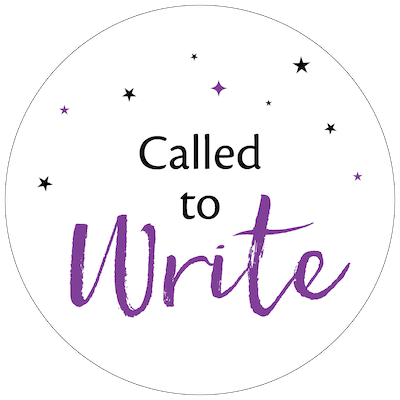Today I’m pleased to welcome back Marina Darlow of the Systems Meet Humanity podcast as a guest expert for the second part of her two-part series, 4 Steps for Making Stuff Actually Happen.
(If you missed it, my interview with Marina on her podcast aired last week. You can check out our interview on the podcast here: http://vision-framework.com/podcast/jenna-avery.)
Marina is a systems expert who focuses on helping people be more productive by putting workable, human systems into place. I invited her to write about how to help us make our work actually happen.
Enjoy!
![]()
4 Steps to Making Stuff Actually Happen, Part II
by Marina Darlow
 Hello again, Marina here, thanks to Jenna’s gracious invitation.
Hello again, Marina here, thanks to Jenna’s gracious invitation.
Have you chosen to do something exciting since we saw each other last? Maybe a task you’ve been avoiding for a year, looking at you accusingly from the to-do list? Have you started it already?
Good.
Today, in the second part of our series, we’ll see how to keep at a task, and then to finish it, completely and unquestionably. We’ll also touch upon a rarely-mentioned and hugely time-hogging matter — the transition from one task to another.
Part II: Staying On Task and Completing It
As a refresher, there are four stages to each task:
- Choosing – deciding which task to start NOW.
- Starting – starting is often the hardest thing to do.
- Staying on Task – keeping focus and fending off distractions.
- Finishing – knowing where you draw the line in the sand and consider something finished.
In Part I, we discussed Choosing and Starting. Today we’ll be covering Staying on Task and Finishing.
Ready?
Let’s start with Stage 3, staying on task.
Stage 3. Staying on Task, and Fending Off Distractions
“My mind runs at such a fast pace I get so far ahead before one task is finished. I am thinking about the 2nd and 3rd things on my task list way before task 1 is complete, or get deathly bored and skip to something more engaging.”
This is a quote from a client. Can you relate?
How do you stay on task?
Keeping your mind from racing ahead of you and instead staying on task ultimately comes down to how you handle three key variables:
- Managing your environment,
- Matching the right task to your available energy levels, and
- Choosing the right level of stimulation for you.
1. Manage Your Environment. The key idea is to have your environment be as distraction-free as possible. Close the door. Put on headphones. Clean your table. Leave only a handful of tabs open. Hang your personal list of rules for creative tasks somewhere you can always see it.
Important: Don’t make it too sterile. Who wants to work in the OR? Unless you’re a surgeon, of course.
2. Match Your Tasks to Your Energy Levels. Brain-dead? Don’t try to write your next masterpiece. Do admin stuff instead. Find your most productive times of day, and schedule demanding tasks then, whenever possible.
In most cases you already know when you’re at your best: morning, afternoon, or evening.
3. Choose Your Stimulation Levels. This one is tricky and usually achieved through some trial and error. However – there are some guidelines. The “mind-racing” often happens in one of the following scenarios:
- You’re doing something mundane, or only mildly demanding, and kind of boring.
- You have a lot on your plate and you haven’t made a very clear list of priorities.
If you’re doing something that doesn’t require all your mental faculties, you’re using the spare brainpower to think about unrelated tasks. Naturally, you start feeling stressed, bored, disengaged, and probably resentful. Time to strategically multi-task.
For example:
- Listen to a podcast while folding laundry instead of worrying about doing the dishes.
- Fill out forms while choosing a design (or a venue) for your presentation.
- Fidget with your favorite spinner while taking meeting minutes.
- It often helps if you have a “lead” and a “supporting” activity. It also helps when activity A is more cerebral and activity B is more physical.
If your mind is racing in a handful of directions, and you feel all of them are equally stressful, time to take a pause, and get back to your plan. Look – what should you be focusing on NOW? This week? Today? Give yourself permission to worry about the later stuff… later.
Stage 4. Finishing Tasks
The key here is to know when the task is finished. How do you know? You define the criteria at the outset.
Some things are easier than others. Clean the office! When is the office considered officially clean? When there’s no more boxes left, just a table, a chair and a laptop.
When is the chapter finished? Hmmm…
When you have said all you planned to say? Sure, but how do you know? Outlines help. Deadlines help too. Sometimes, when you’ve worked on it for 3 hours, after the initial “good enough” version is ready is where you draw the line in the sand.
The important part is to decide ahead of time when you’d consider your task DONE.
Bonus: The Art of Transition
Now that you know how to finish, let’s task about how to transition from one task to another or return to a task after an interruption. “Transition” is a fancy name for making this shift.
Here’s what happens, most often at a subconscious level:
- You become detached from a task.
- You experience a drop in your energy.
- You then re-attach to a new task.
This process requires your brain to get back to higher energy and focus levels, consuming surprisingly huge amounts of time and effort.
Transitions tend to be harder for visionary creatives.
- It’s harder to start, because of the all-or-nothing perception.
- It’s harder to stop, because you’ve either been hyper-focusing, or you’re lost in the details.
- Your emotions – anger, confusion, frustration – cause an unpleasant drain on your mental resources. (That’s actually true for everyone, creative or not.)
So how can we make transitions easier?
Three elements: awareness, planning, and ritual.
- Awareness. Allow time and energy for transitions to occur. For example, schedule at least 15 minutes between meetings. Give yourself permission to get up from your desk and walk around the office after you’ve finished a tricky piece of code, and before you start the next one. Stretch and sit there for a moment after writing a proposal, and before you make your next call.
- Plan for transitions. Have a well-defined plan ahead of time. A plan makes it easier to both detach and re-attach, because you know what’s coming next. Anxiety levels go down, and you don’t waste mental energy figuring out what’s next. We talked about this in Part I, around the process of choosing a task.
- Design “transition rituals.” A ritual can be absolutely anything, as long as it is short and easy. The meaning of the ritual comes from you. But it helps if a ritual is connected to tasks at hand.
For example: a ritual to transition from research to writing can look like this:
- Bookmark the browser tabs you’ll need later.
- Close all research-related tabs.
- Get up and jump 3 times.
- Open a Google Doc.
- Click Tools->Voice Typing.
- Start with 30 seconds on talking gibberish into the mic.
A ritual anchors us, helping us along on the path from the detachment from one task, through energy drop we experience, and into attachment or re-attachment.
Broadly speaking, there are three types of transitions:
- From task A to task B.
- From task A back to task A after someone interrupted you.
- From task A back to task A after you’ve interrupted yourself.
You may design one transition ritual to rule them all, or you may come up with a different ritual for each type. Or you may want a ritual for each key activity you’re doing – a ritual for transitioning into writing, a ritual for doing house chores, a ritual for getting back on track after someone has interrupted you, and so on.
The rituals you develop will ideally become habits, because when an action is a habit it saves you tons of decision-making energy, or in other words, activation energy.
To Recap
Execution is rarely effortless (otherwise me and a host of my productivity-geeky colleagues would be forced into another line of work). But a strategic approach to your workload at each of the four phases (choosing, starting, staying, and finishing a task) makes the shiny “getting things done” goal tangibly more achievable.
Choosing a task becomes way easier if you follow a plan, broken down into bite-size chunks.
Reducing activation energy really helps to start anything, however daunting – remember the 20 second rule?
A fitting environment coupled with the right stimulation levels keeps us on task and fends off pesky distractions. Finally, (no pun intended) setting criteria for “what’s considered DONE” at the outset is absolutely essential to, well, finishing.
What about the twilight zone between the tasks? Developing quick and easy rituals for mastering transitions will make a huge difference in your ability to make things happen.
Combine these tools and you’re unstoppable.
![]()
About Marina

Marina Darlow is a systems expert and a productivity geek. She sees her job as helping impact-driven entrepreneurs get 10-20 more productive hours a week, stop leaking money, and prevent stress-fueled breakdowns.
An engineer by training, Marina came to a realization a couple years ago: working for a conglomerate was not as inspiring as she wants her life work to be. Her quest for inspiration brought her to found Vision Framework, a company that builds small, purpose-driven businesses from the inside, helping entrepreneurs run their companies with ease by putting effective, easy-to-use, and fun (yep!) systems in place.
